阿里lowcode低码引擎源码(一)页面ui结构和插件系统
整体上ui界面渲染可以概括为三部部分
插件(负责页面功能和UI的创建)、skeleton(这个页面的核心骨架负责ui结构管理)、ui渲染(负责最终的UI渲染)
流程上
注册插件->初始化插件为skeleton添加配置->根据配置信息对应用的Area添加配置->Area调用自己的container进行配置添加->WidgetContainer添加配置的不同为自己创建不同的item->Area对象以属性的形式传入UI组件->UI组件遍历Area中WidgetContainer的items进行渲染
下面是一个简化的主流程核心代码
// 注册一批内置插件
async function registryInnerPlugin(designer: any, editor: any, plugins: Plugins) {
await plugins.register(OutlinePlugin, {}, { autoInit: true });
await plugins.register(defaultPanelRegistry(editor));
}
// 页面的核心骨架负责调控一切,也作为LowCodePluginManager对象的核心功能,同时UI也从其身上拿资源去渲染
const innerSkeleton = new InnerSkeleton();
// 被LowCodePluginManager对象使用,LowCodePluginManager对象创建一个context对象调用该方法并创建新的属性添加,他的大多数能力也是通过创建的context进行操作
const pluginContextApiAssembler: ILowCodePluginContextApiAssembler = {
assembleApis: (context: ILowCodePluginContextPrivate, pluginName: string, meta: IPublicTypePluginMeta) => {
context.skeleton = new Skeleton(innerSkeleton, pluginName, false);
},
};
// 低代码插件管理者 主要用于全局各种context的初始化与保存以及全局插件的注册与初始化
const innerPlugins = new LowCodePluginManager(pluginContextApiAssembler);
// 切换模式看具体使用那大类的插件
let plugins = new Plugins(innerPlugins)
registryInnerPlugin({}, {}, plugins);
export async function init(
container?: HTMLElement,
// options?: IPublicTypeEngineOptions,
) {
//初始化流程开始的起点
await plugins.init({});
//ui渲染会拿到innerSkeleton对象上的资源进行渲染
ReactDOM.createRoot(container!).render(
createElement(Workbench, {
skeleton: innerSkeleton,
className: 'engine-main',
})
)
}//Area内容添加流程
从registryInnerPlugin开始,Plugins调用LowCodePluginManager,LowCodePluginManager生成带skeleton属性的context, 将context传入插件中,插件返回一个带初始化方法的对象作为一个配置,LowCodePluginManager调用返回的配置对象的初始化方法,该方法通过之前传入context解析出skeleton调用add传入一个渲染配置对象
我们具体看下LowCodePluginManager的注册方法
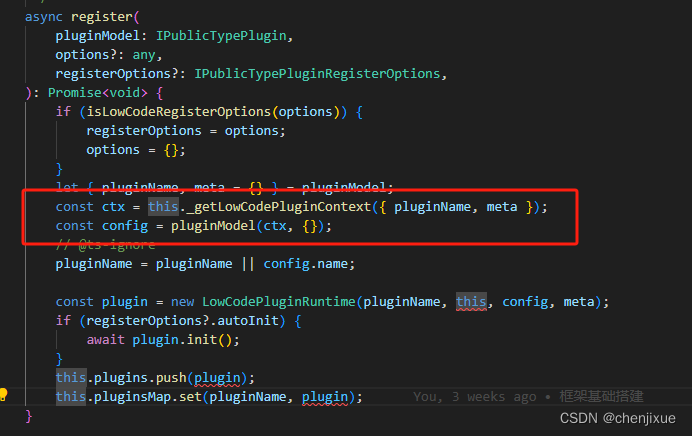
这一步其实就是生成了一个context,然后将context传入plugin插件,下面是些极简化的插件代码(pluginModel),其余的插件都大差不差。
有通过skeleton添加视图的
往左侧区域添加视图
export const OutlinePlugin = (ctx: IPublicModelPluginContext, options: any) => {
const { skeleton, config, common, event, canvas, project } = ctx;
ctx.extraTitle = options && options['extraTitle'];
let isInFloatArea = true;
const hasPreferenceForOutline = config.getPreference().contains('outline-pane-pinned-status-isFloat', 'skeleton');
if (hasPreferenceForOutline) {
isInFloatArea = config.getPreference().get('outline-pane-pinned-status-isFloat', 'skeleton');
}
const BackupPaneName = 'outline-backup-pane';
const MasterPaneName = 'outline-master-pane';
let masterPaneController: PaneController | null = null;
return {
async init() {
skeleton.add({
area: 'leftArea',
name: 'outlinePane',
type: 'PanelDock',
index: -1,
content: {
name: MasterPaneName,
props: {
icon: IconOutline,
description: "点击展开树",
},
content: (props: any) => {
},
},
});
},
};
};
OutlinePlugin.pluginName = 'OutlinePlugin';往中间区域添加视图
import { SettingsPrimaryPane } from "@/componets/settings-primary-pane";
import DesignerPlugin from "@/core/designer/designer";
// 注册默认的面板
export const defaultPanelRegistry = (editor: any) => {
const fun = (ctx: any) => {
return {
init() {
const { skeleton } = ctx;
skeleton.add({
area: 'mainArea',
name: 'designer',
type: 'Widget',
content: <DesignerPlugin
engineEditor={editor}
/>,
});
},
};
};
fun.pluginName = '___default_panel___';
return fun;
};
export default defaultPanelRegistry;
有通过material管理和获取设计器资产包的
export const componentMetaParser = (designer: any) => {
const fun = (ctx:any) => {
return {
init() {
const { material } = ctx;
material.onChangeAssets(() => {
const assets = material.getAssets();
const { components = [] } = assets;
designer.buildComponentMetasMap(components);
});
},
};
};
fun.pluginName = '___component_meta_parser___';
return fun;
};
import { IPublicModelPluginContext } from '@alilc/lowcode-types';
// import { injectAssets } from '@alilc/lowcode-plugin-inject';
import assets from '../services/assets.json';
import { getProjectSchema } from "../services/mockService"
const EditorInitPlugin = (ctx: IPublicModelPluginContext, options: any) => {
return {
async init() {
const { material, project, config } = ctx;
// // 设置物料描述
await material.setAssets(assets);
const schema = await getProjectSchema("");
// // 加载 schema
project.importSchema(schema as any);
},
};
}
EditorInitPlugin.pluginName = 'EditorInitPlugin';
export default EditorInitPlugin;
总之插件可以拿到context里面东西从而获得对全局的管控,包括skeleton注册视图,material管理资产包,project项目管理等等
以上就是算是插件注册完成了,注意只是注册添加完了。接下来开始插件的初始化,
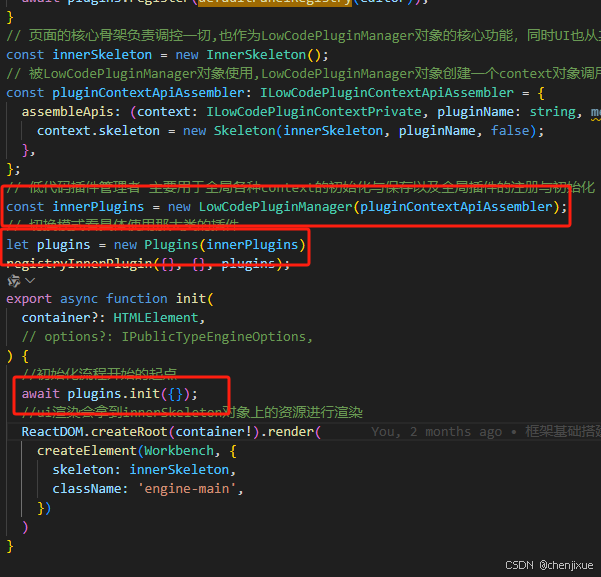
初始化其实最终使用的是LowCodePluginManager的初始化方法对之前注册的插件遍历初始化

接下来就是调用插件的init方法进行初始化了 ,举例其中一个通过skeleton注册视图的OutlinePlugin来说
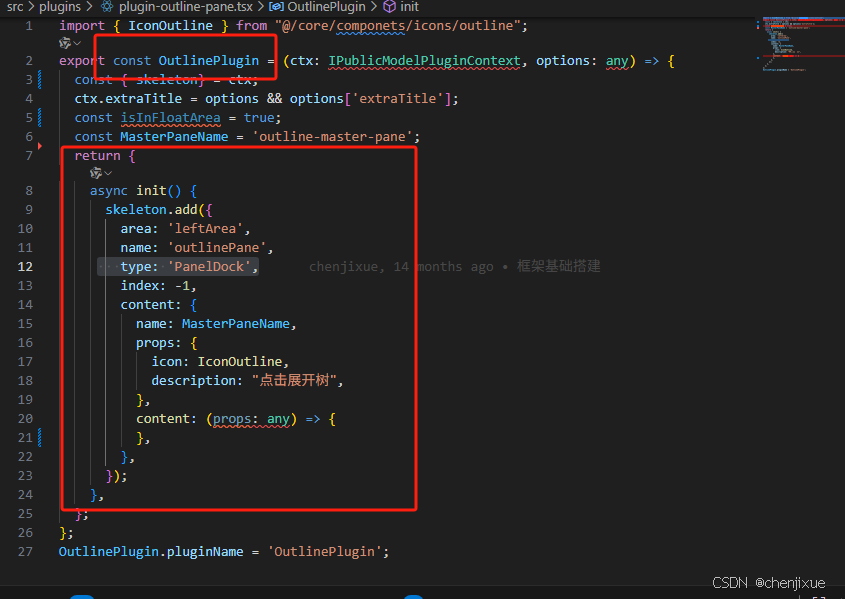
skeleton.add ->this.leftArea.add->WidgetContainer.add解析配置->调用来自Area的handle方法
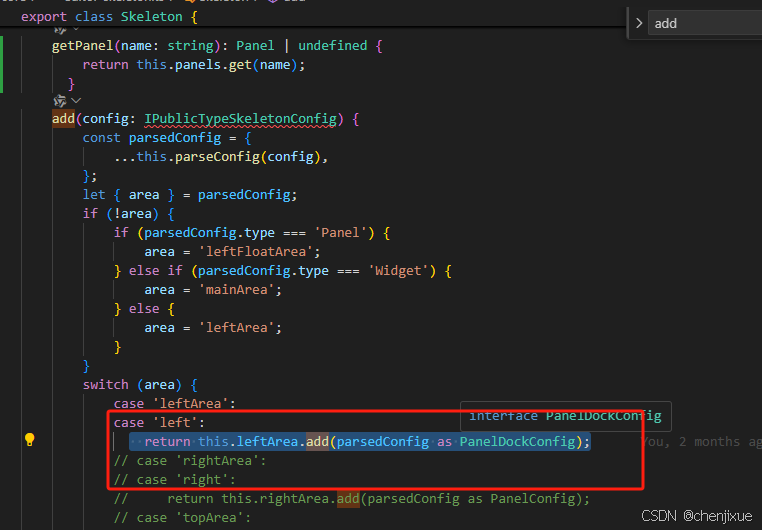

这个 container其实就是widgetContainer

这个this.handle实际上指的是Area构造函数第三参

this.createWidget
createWidget(config: IPublicTypeWidgetBaseConfig) {
config = this.parseConfig(config);
let widget: IWidget;
if (isDockConfig(config)) {
if (isPanelDockConfig(config)) {
widget = new PanelDock(this, config);
} else if (false) {
// DialogDock
// others...
} else {
widget = new Dock(this, config);
}
} else if (isDividerConfig(config)) {
widget = new Widget(this, {
...config,
type: 'Widget',
// content: Divider,
});
} else if (isPanelConfig(config)) {
widget = this.createPanel(config);
} else {
widget = new Widget(this, config as WidgetConfig);
}
return widget;
}会根据配置的不同生成不同的widget,拿我们当前的leftArea配置来说返回的是PanelDock对象,
PanelDock对象
export class PanelDock implements IWidget {
readonly name: string;
private _body: ReactNode;
private inited = false;
private _shell: ReactInstance | null = null;
constructor(readonly skeleton: Skeleton, readonly config: PanelDockConfig) {
const { name } = config
this.name = name
}
get body() {
if (this.inited) {
return this._body;
}
this.inited = true;
const { props } = this.config;
this._body = createElement(PanelDockView, {
...props,
dock: this,
});
return this._body;
}
get content(): ReactNode {
return createElement(WidgetView, {
widget: this,
ref: (ref) => {
this._shell = ref;
},
key: this.id,
});
}
}PanelDock.content ->WidgetView( PanelDock.body)->PanelDockView->DockView组件
export function DockView({ title, icon, description, size, className, onClick }) {
return (
<Title title={composeTitle(title, icon, description)} className={classNames('lc-dock', className, {
[`lc-dock-${size}`]: size,
})}
/>
);
}到此则为一个组件添加到对应的leftArea对象下的container的items中,来到最后一步试图渲染
首先我们看看整个大框架的视图组件是如何渲染的

我们就拿本次leftArea,其具体渲染代码主要就是拿到我们area.container.items进行渲染
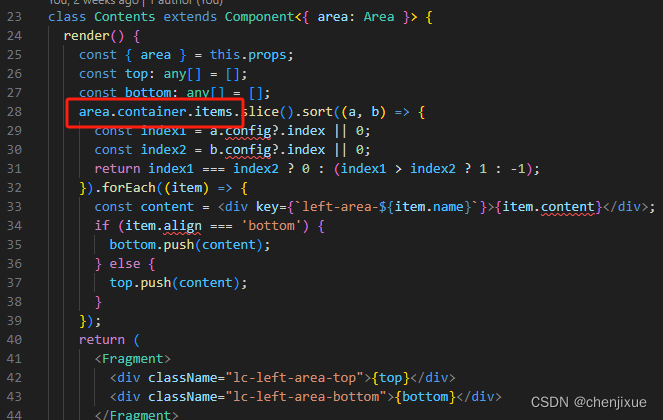
最终效果视图
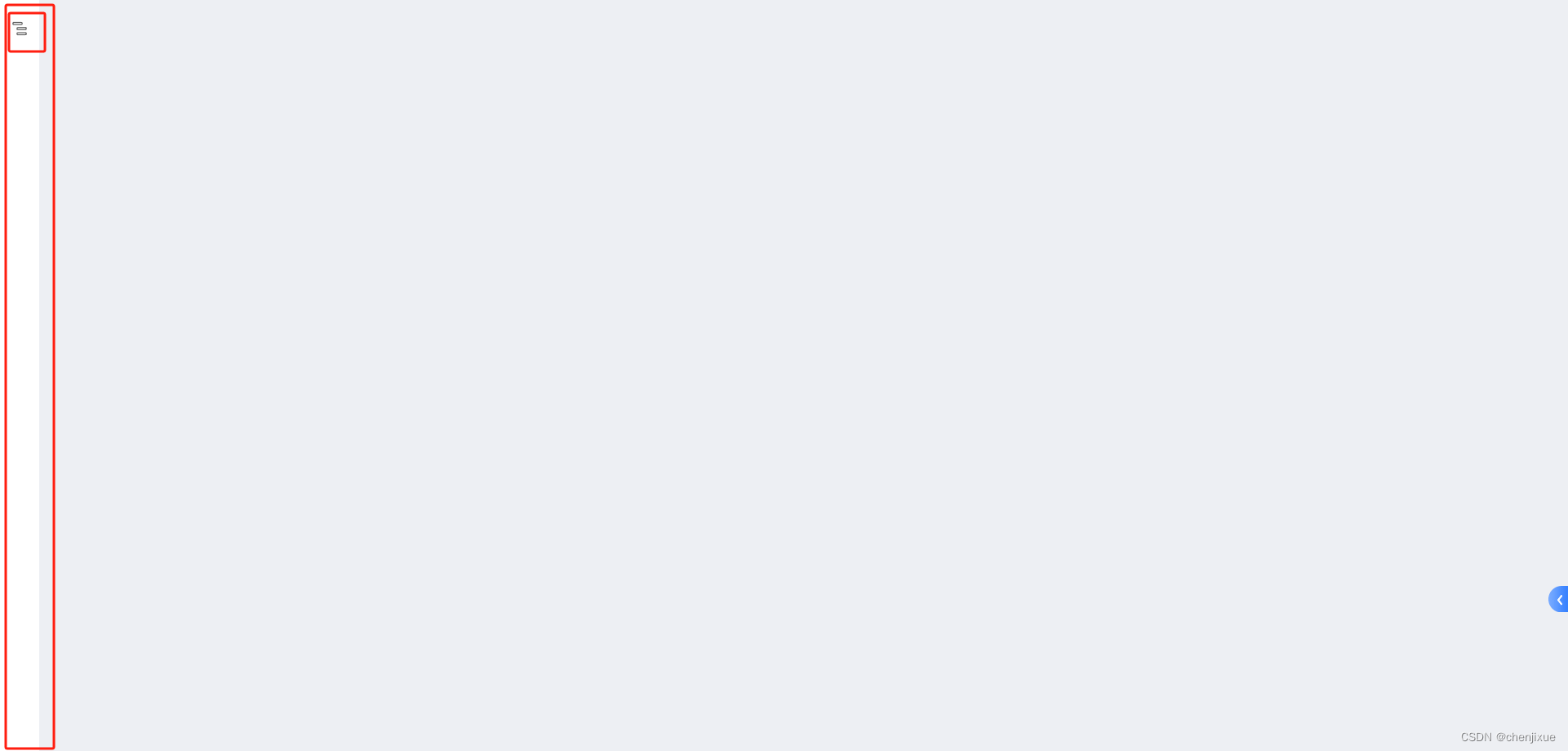
github地址
更多推荐
 已为社区贡献1条内容
已为社区贡献1条内容


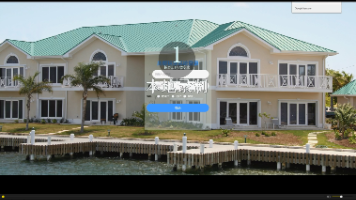
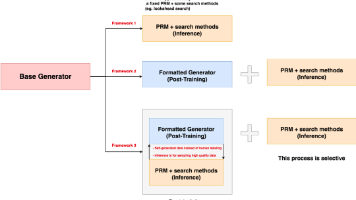





所有评论(0)